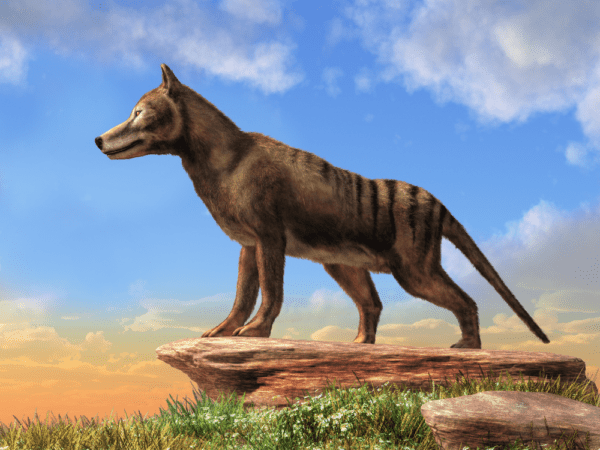When did the Tasmanian tiger go extinct? The Tasmanian tiger went extinct in the 1930s and was last seen in the Hobart zoo. Animals go extinct due to multiple reasons such as climate change, meteor and comet strikes, or the loss of habitat.
Some unique and rare animals are now extinct from the face of the earth. The Tasmanian tiger is one of the most extinct animals on the planet.
This article will explore why and when the Tasmanian tiger became extinct.
Table of Contents
What is a Tasmanian Tiger?
The Tasmanian tiger is an extinct mammal primarily found in Australia and New guinea. Australia accounts for one-third of all mammal extinction, and at least more than ten species have become extinct following the settlement of Europe. Many other species are at risk of extinction too.
Tasmanian tiger was also known as the thylacine, and they went extinct many decades ago. The small population had remained conserved when Europeans arrived in Australia. The Tasmanian tiger was considered a dangerous animal and threatened livestock.
The government of that time paid bounties to eradicate these species, which resulted in a sudden decline of them in the early 1900s. The species was declared extinct from the face of the earth in 1936.
If we talk about the appearance of Tasmanian tigers, they have tiger-like stripes on their lower back and tail. They were also called Tasmanian wolves because they resemble large dogs in appearance.
When Did the Tasmanian Tiger go Extinct?
At the time of European settlement, there were around 5000 thylacines present in Tasmania. It is believed that due to their excessive hunting, loss of habitat, and spread of different diseases, they have gone extinct so rapidly.
There has been no confirmed day when thylacine becomes extinct. It was said that the last Tasmanian tiger named Benjamin was seen in Hobart Zoo in 1936. After that, there is no news of any sightings related to Tasmanian tigers.
Some wildlife organizations have stated that there have been reports of mysterious sightings, making some people believe that Tasmanian tigers were still out there. Roughly there have been a total of 8 sightings of an animal claimed to be a Tasmanian tiger.
Physical Features of Tasmanian Tigers
Research on the fossils of Tasmanian tigers reveals that their large-bodied species were at significant risk of becoming extinct than their small-bodied species.
The thylacine was capable of chasing and hunting down large prey such as kangaroos, sheep, etc. Scientists looked at their jaw and teeth based on their remaining fossils, making them sure that they were meat specialists.
Their dental feature doesn’t associate them with scavenging or bone consumption.
Other evidence suggests that Tasmanian tigers can take prey up to 30kg, and they were a significant threat to livestock.
The morphological feature of the Tasmanian tigers showed that they have long snouts and a very low rate of tooth fracture and wear. This suggests that they relied only on small prey.
Thylacines were thought to live away from the humans, using caves as their lair. Many fossils of Tasmanian tiger and their prey were found from old caves.
These caves vary in size from 5-to 10 feet. The caves had the fossils of both small and large species killed by Tasmanian tigers.
What did the Tasmanian tiger eat?
The thylacine was the largest known carnivorous marsupial of its time, and it subsisted on a diet of small mammals, birds, and reptiles.
Despite its name, the Tasmanian tiger was not closely related to actual tigers. Instead, it belonged to a group of marsupials known as the thylacine, including the Tasmanian devil and the numbat.
The thylacine was one of the few predators in Tasmania, and it played an essential role in regulating the populations of small mammals and reptiles.
Read Also: How many snow leopards are left in the world





